The Story of the Malakand Field Force by Winston S. Churchill (guided reading books txt) 📕
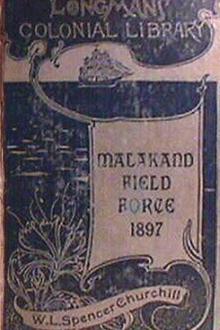
- Author: Winston S. Churchill
- Performer: -
Book online «The Story of the Malakand Field Force by Winston S. Churchill (guided reading books txt) 📕». Author Winston S. Churchill
The experience of all in the camp that night was most unpleasant. Those who were in the trenches were the best off. The others, with nothing to do and nothing to look at, remained for six hours lying down wondering whether the next bullet would hit them or not. Some idea of the severity of the fire may be obtained from the fact that a single tent showed sixteen bullet holes.
Brigadier-General Wodehouse was wounded at about eleven o’clock. He had walked round the trenches and conferred with his commanding officers as to the progress of the attack and the expenditure of ammunition, and had just left Sir Bindon Blood’s side, after reporting, when a bullet struck him in the leg, inflicting a severe and painful, though fortunately not a dangerous, wound.
Considering the great number of bullets that had fallen in the camp, the British loss was surprisingly small. The full return is as follows:—
BRITISH OFFICERS.
Wounded severely—Brigadier-General Wodehouse.
” slightly—Veterinary-Captain Mann.
BRITISH SOLDIERS.
Killed. Wounded.
Queen’s Regiment … 1 3
NATIVE RANKS—Wounded, 20.
FOLLOWERS— ” 6.
Total, 32 of all ranks.
The casualties among the cavalry horses and transport animals were most severe. Over 120 were killed and wounded.
The enemy drew off, carrying their dead with them, for the most part, but numerous bodies lying outside the shelter trench attested the valour and vigour of their attack. One man was found the next morning, whose head had been half blown off, by a discharge of case shot from one of the mountain guns. He lay within a yard of the muzzle, the muzzle he had believed would be stopped, a victim to that blind credulity and fanaticism, now happily passing away from the earth, under the combined influences of Rationalism and machine guns.
It was of course very difficult to obtain any accurate estimate of the enemy’s losses. It was proved, however, that 200 corpses were buried on the following day in the neighbourhood, and large numbers of wounded men were reported to have been carried through the various villages. A rough estimate should place their loss at about 700.
The situation was now cleared. The back of the Hadda Mullah’s gathering was broken, and it dispersed rapidly. The Khan of Nawagai feverishly protested his unswerving loyalty to the Government. The Mamunds were disheartened. The next day General Elles’s leading brigade appeared in the valley. Sir Bindon Blood rode out with his cavalry. The two generals met at Lakarai. It was decided that General Elles should be reinforced by the 3rd Brigade of the Malakand Field Force, and should clear the Bedmanai Pass and complete the discomfiture of the Hadda Mullah. Sir Bindon Blood with the cavalry would join Jeffreys’ force in the Mamund Valley, and deal with the situation there. The original plan of taking two brigades from the Malakand to Peshawar was thus discarded; and such troops of Sir Bindon Blood’s force as were required for the Tirah expedition would, with the exception of the 3rd Brigade, reach their points of concentration via Nowshera. As will be seen, this plan was still further modified to meet the progress of events.
I had rejoined the 3rd Brigade on the morning of the 21st, and in the evening availed myself of an escort, which was proceeding across the valley, to ride over and see General Elles’s brigade. The mobilisation of the Mohmand Field Force was marked by the employment, for the first time, of the Imperial Service Troops. The Maharaja of Patiala, and Sir Pertab Singh, were both with the force. The latter was sitting outside his tent, ill with fever, but cheery and brave as ever. The spectacle of this splendid Indian prince, whose magnificent uniform in the Jubilee procession had attracted the attention of all beholders, now clothed in business-like khaki, and on service at the head of his regiment, aroused the most pleasing reflections. With all its cost in men and money, and all its military and political mistakes, the great Frontier War of 1897
has at least shown on what foundations the British rule in India rests, and made clear who are our friends and who our enemies.
I could not help thinking, that polo has had a good deal to do with strengthening the good relations of the Indian princes and the British officers. It may seem strange to speak of polo as an Imperial factor, but it would not be the first time in history that national games have played a part in high politics. Polo has been the common ground on which English and Indian gentlemen have met on equal terms, and it is to that meeting that much mutual esteem and respect is due. Besides this, polo has been the salvation of the subaltern in India, and the young officer no longer, as heretofore, has a “centre piece” of brandy on his table night and day. The pony and polo stick have drawn him from his bungalow and mess-room, to play a game which must improve his nerve, his judgment and his temper. The author of the Indian Polity asserts that the day will come when British and native officers will serve together in ordinary seniority, and on the same footing. From what I know of the British officer, I do not myself believe that this is possible; but if it should ever came to pass, the way will have been prepared on the polo ground.
The camp of the 3rd Brigade was not attacked again. The tribesmen had learnt a bitter lesson from their experiences of the night before. The trenches were, however, lined at dark, and as small parties of the enemy were said to be moving about across the front, occupied by the Queen’s, there was some very excellent volley firing at intervals throughout the night. A few dropping shots came back out of the darkness, but no one was the worse, and the majority of the force made up for the sleep they had lost the night before.
The next morning Sir Bindon Blood, his staff and three squadrons of the 11th Bengal Lancers, rode back through the pass of Nawagai, and joined General Jeffreys at Inayat Kila. The 3rd Brigade now left the Malakand Field Force, and passed under the command of General Elles and beyond the proper limits of this chronicle; but for the sake of completeness, and as the reader may be anxious to hear more of the fine regiment, whose astonishing fire relieved the strategic situation at Nawagai, and inflicted such terrible losses on the Hadda Mullah’s adherents, I shall briefly trace their further fortunes.
After General Wodehouse was wounded the command of the 3rd Brigade devolved upon Colonel Graves. They were present at the forcing of the Bedmanai Pass on the 29th of September, and on the two following days they were employed in destroying the fortified villages in the Mitai and Suran valleys; but as these operations were unattended by much loss of life, the whole brigade reached Shabkadr with only three casualties.
Thence the Queen’s were despatched to Peshawar to take part in the Tirah expedition, in which they have added to the high reputation they had acquired in the Malakand and Mohmand Field Forces.
CHAPTER XIV: BACK TO THE MAMUND VALLEY
“Again I revisit the hills where we sported, The streams where we swam, and the fields where we fought.”
“On a Distant View of Harrow,” BYRON.
It is with a vague and undefined feeling of satisfaction that I conduct the reader back to the entrenched camp of Inayat Kila at the entrance of the Mamund Valley, where so much happened, and with which so many memories and experiences are associated. Now that the troops are gone, the scene of life and activity has become solitary and silent. The graves of the officers and men who fell there are lost in the level of the plain. Yet the name is still remembered in not a few English homes, nor will the tribesmen, looking at the deserted entrenchment, easily forget the visit of the 2nd Brigade.
When, on the afternoon of the 15th, the camp had first been pitched, only a small and hasty shelter-trench surrounded it. But as the weeks passed, the parapets grew higher, the ditches deeper, and the pits more numerous, until the whole place became a redoubt. Traverses were built along the perimeter to protect the defenders from flanking fire. Great walls of earth and stone sheltered the horses and mules. Fifty yards out, round the whole camp, a wire trip was carefully laid, to break a rush, and the paths and tracks leading to the entrances had become beaten, level roads. The aspect of permanency was comforting.
Since the action of the 16th September, the 2nd Brigade had been unable to move. Transport—the life and soul of an army—is an even more vital factor here than in less undeveloped countries. The mobility of a brigade depends entirely on its pack animals. On the 14th many mules were killed. On the 16th the field hospitals were filled with wounded.
It now became impossible for the camp to move, because the wounded could not be carried. It was impossible to leave them behind, because, deducting an adequate guard, the rest of the brigade would have been too few for fighting. The 2nd Brigade was therefore a fixture. Its striking power was limited to out and home marches. The first step taken by Sir Bindon Blood was to restore its mobility by getting the wounded sent down to the base. Some changes in the constitution of the force were also made. The 11th Bengal Lancers, who now joined the Mohmand Field Force, were succeeded by the Guides Cavalry. The 35th Sikhs, who had suffered such severe losses, were replaced by the 31st Punjaub Infantry from Panjkora. The Buffs, who were full of fever, were exchanged for the Royal West Kent from the Malakand. No.7 British Mountain Battery took the place of No.8, which was now reduced to four guns, having lost in the week’s fighting half its officers, a third of its mules, and a quarter of its men.
Camels to carry the wounded were sent up from Panjkora. The Buffs escorted the long convoy down the line of communications. Every one in camp was sorry to see the last of them. In the fighting of the week they had made it clear that the British Infantry battalion is the backbone of every mixed brigade, and they shared with the Guides Infantry one of those enviable reputations for steadiness which are so hard to gain and so easy to lose on active service.
On the 24th of September Sir Bindon Blood received despatches appointing him to the command of the First Division of the Tirah Expeditionary Force, and as the negotiations with the Mamund Jirgahs were then in progress, and it seemed that a settlement might be reached, he proceeded with his staff to Panjkora. Here he was on the telegraph wire, and could communicate easily and quickly with India, and at the same time watch the progress of events at Inayat Kila. Mr. Davis conducted the diplomatic relations with the Mamunds. On the 26th a Jirgah from the tribe came into camp. They deposited 4000 rupees as a token of submission, and brought in fifty firearms. These, however, were of the oldest and most antiquated types, and were obviously not the weapons with which so many soldiers had been killed and wounded. This was pointed out to the tribal representatives. They protested that they had no others.

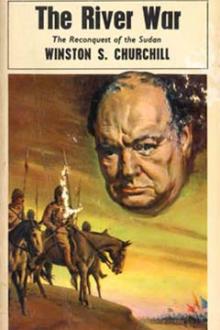
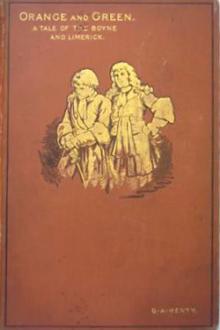
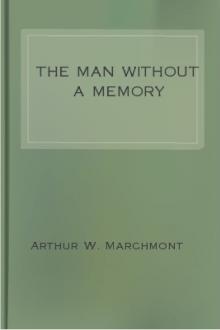
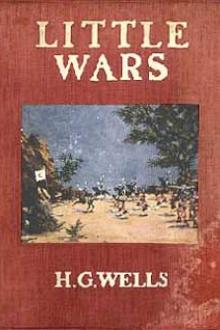
Comments (0)